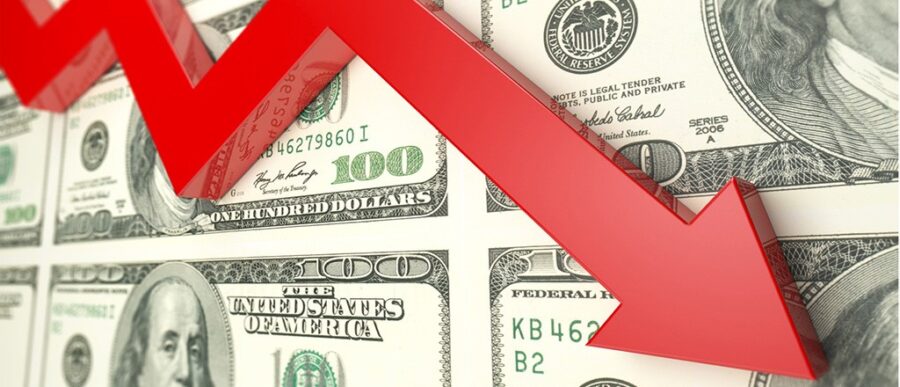Over the past nearly three weeks, the U.S. Federal Reserve Bank has put up a valiant effort to protect households, businesses and the economy from the effects of the coronavirus pandemic, or COVID-19. On Monday, March 23, it announced its latest stimulus package that included expanded windows for its purchase of securities and new credit facilities for businesses and municipalities. The Fed’s earlier actions have included sharp interest rate cuts, short-term loan facilities, asset purchase windows and regulatory latitude for banks that may fall short of capital requirements as they participate in those programs.
How much further could the Fed go? Faculty at Wharton and Yale have expressed concerns over the trajectory of the Fed’s actions, arguing that it perhaps should stop short at taking on a fiscal policy-making role that is typically reserved for Congress.
“I’m extremely skeptical about the political utility of the Fed becoming a major fiscal policy maker,” said Peter Conti-Brown, Wharton professor of legal studies and business ethics. “That said, the Fed can still provide huge back-end market liquidity for what Congress and the Treasury should do for fiscal policy. It has legal authority – non-emergency legal authority – to diversify its holdings, with different kinds of government bonds to include revenue bonds or even perhaps general obligation bonds of states and municipalities.”
Yair Listokin, a law professor at Yale University whose research specialties include central banking law, agreed that the Fed should not be taking a lead role in fiscal policy. “I am highly resistant to any program where the Fed is unilaterally going ahead and sending checks to everyone,” he said. “That’s the classic ‘helicopter money’ form.”
Conti-Brown and Listokin shared their perspectives on the Wharton Business Daily radio show on SiriusXM. (Listen to the full podcast using the player above.)
To be sure, the Fed could announce that it would make funds available for use in fiscal policy, and the Treasury could agree to allocate them to various needs after authorization from Congress, Conti-Brown said. However, the path the Fed seems to be taking in its response to COVID-19 “slightly inverts the sequence of events,” he added. In standard practice, Congress first authorizes spending, after which Treasury does the math of how much revenue it can raise from taxes and other sources, and support from the Fed follows, he noted. “If we can get that time sequence right, that doesn’t risk making the Fed the fiscal policy maker.”
“I’m extremely skeptical about the political utility of the Fed becoming a major fiscal policy maker.” –Peter Conti-Brown
The Fed taking on such policy-making roles would call for some statutory changes, Listokin noted. “But more than that, we already have so much power concentrated in the Fed that it’s better to have other agencies or other parts of the government doing that.”
At the same time, “helicopter money” such as the Fed dispatching checks directly to individual taxpayers or buying bonds would be backed by the legislature, he noted. “So, the power is coming from Congress, rather than from this type of agency.” On its part, the Trump administration has unveiled a $1 trillion stimulus package that includes a plan for direct cash transfers of up to $1,200 each to U.S. taxpayers.
Listokin was critical also of suggestions that the Fed should start buying equities, which the head of a regional Fed recently raised as a possibility. The Boston Fed president Eric Rosengren recently suggested that the central bank could buy equity stocks to prop up the market.
The Fed is on “firm legal ground” as a buyer of debt, but not of equities, said Listokin. “They’ve never done it before. There are other central banks that have. The Bank of Japan owns a lot of equities.”
If the Fed were to start buying equities, “it creates all sorts of sticky problems,” Listokin continued. “I think the Fed is well-equipped, from an expertise standpoint, to design a program. But there are all sorts of value trade-offs that I think the Fed is not particularly well-equipped on, in terms of buying equities.”
Rapid-fire Interventions
In its latest announcement, the Fed committed to buying unlimited amounts of Treasury and mortgage-backed securities, dropping its earlier cap of $700 billion. It would widen its open market as necessary to maintain the federal funds rate in a target range of 0% to .25%. It also unveiled new credit programs totaling $300 billion for employers, consumers and businesses. It tapped its emergency lending powers under Section 13 (3) of the Federal Reserve Act for three other programs: One, called Term Asset-Backed Securities Loan Facility, will support securities made up of student loans, auto loans, credit card loans and other small business loans. The other two will give municipalities expanded credit opportunities in money market mutual funds and commercial paper (unsecured, short-term debt). Next, the Fed expects to establish a Main Street Business Lending Program to help small and mid-sized businesses.
Those actions build on the Fed’s moves on March 19, when it announced a Money Market Mutual Fund Liquidity Facility (MMLF) to provide a liquidity backstop for the money market mutual fund sector. It had stated that it would provide that liquidity through loans to money market funds, aimed at helping them meet redemptions by households and other investors. At last count, money market funds had total assets of $4.74 trillion. Two days later, it extended that credit support to state and municipal money markets. (It noted that it had operated a similar program during the last financial crisis.) The Treasury department will provide $10 billion of credit protection for losses the Fed may incur in operating the MMLF facility. The Fed has also modified a rule that allowed a gradual phase-in of restrictions if a bank’s capital declines by a certain amount.
“I am highly resistant to any program where the Fed is unilaterally going ahead and sending checks to everyone.” –Yair Listokin
The biggest moves by the Fed were lowering interest rates on two occasions. The first was on March 3 by 0.5 percentage points, and it acted again on March 15 by a full percentage point to bring them to near-zero levels. In these moves, it departed from its usual practice of pruning rates only at scheduled meetings, a Wall Street Journal report noted. The Fed also lowered the rate that it charges banks for loans from 1.75% to 0.25%. That rate is lower than what it offered during the Great Recession of 2007-2009, a Brookings report noted.
In between those two rate cuts, the Fed announced a $1.5 trillion package of short-term loans and purchases of Treasury securities in a bid to infuse more liquidity into the financial system. Listokin noted that this package would mean “a massive balance sheet expansion.” As of March 18, the Fed had total assets of about $4.6 trillion on its balance sheet. “We have no idea what the commercial paper and money market facilities will do, but that could be large, as well,” he added.
The Fed had used its emergency lending powers for two other interventions last week, after securing the approval of the Treasury secretary. In one, it sought to boost the $1.2 trillion market for short-term commercial paper by setting up a special purpose vehicle that would buy those securities to provide a “liquidity backstop” for issuers. Commercial paper issuances help provide auto loans, mortgages and finance for the operational needs of a range of companies. In addition, the Fed also relaunched a short-term lending facility for so-called “primary dealers,” who are 24 large financial institutions that act as the Fed’s counterparts in trading in the financial markets.
The Fed’s interventions have met with mixed responses. The latest stimulus on Monday failed to energize the stock markets, but the bond markets responded favorably, The Wall Street Journal reported. The central bank’s move on March 15 to lower interest rates to near zero levels had also failed to cheer the stock markets. Instead, it sent them into a panic mode, causing stocks to nosedive, as a Washington Post report noted. But other actions, such as short-term loans for primary dealers, seem to be working as planned. Within days of the announcement, primary dealers picked up loans of about $300 billion, said Conti-Brown.
Working with Central Banks Globally
The Fed last week also set up temporary U.S. dollar liquidity arrangements, or swap lines, with nine central banks of up to $60 billion each. That list includes central banks in Australia, Sweden, Norway and Singapore. “The dollar is the reserve currency globally,” Listokin said. “In times of panic, people want to hold the reserve currency.”
The Fed said the swap lines are designed “to help lessen strains in global U.S. dollar funding markets, thereby mitigating the effects of these strains on the supply of credit to households and businesses, both domestically and abroad.” It already has similar arrangements with the Bank of Canada, the Bank of England, the Bank of Japan, the European Central Bank, and the Swiss National Bank.
The coordination between those central banks has not yet extended to joint action in lowering interest rates or by announcing “regulatory forbearance,” Listokin noted.
“That goes back to a long-standing tension in the international coordination of central banking, where from regulatory perspectives, virtually all major central banks and major economies want coordination so that we can avoid international arbitrage and flighty capital flows,” said Conti-Brown. “But from a monetary policy perspective, it’s kind of every tub on its own bottom, and that creates a real problem during crisis coordination. The swaps are the frontier, but that’s not even coordination so much as the Federal Reserve acting as a currency market-maker of last resort for many of the world’s leading economies.”
“We don’t see once-a-decade or once-a-generation a screeching halt to all macroeconomic activity, and we don’t know what will come from this.” –Peter Conti-Brown
Agile in Uncertain Times
By all accounts, the Fed has jumped in with both feet as investors fled to cash in the aftermath of COVID-19. “The Fed is trying to be nimble and creative in its approaches,” said Conti-Brown, noting that it couldn’t have been prepared for the impact of COVID-19 on the financial markets. “So much of the regulatory and legislative apparatus that was put in place after the last financial crisis was anticipating what you might call once-a-decade, or once-a-generation kinds of crisis,” but the current crisis is way more severe, he added. “We don’t see once-a-decade or once-a-generation a screeching halt to all macroeconomic activity, and we don’t know what will come from this. Right now, the markets are in complete turmoil.”
Conti-Brown gave “high marks” to Congress and the Fed for their responses in terms of economic policy. “They’re trying to move fast. They’re trying to be big, but we just don’t have our hands around this right now.”
“It has been dizzying,” said Listokin, while agreeing with Conti-Brown that it’s “very hard” to prepare for an eventuality like the coronavirus pandemic. “We’re in uncharted territory here, and avoiding a banking meltdown and financial sector meltdown is Priority No. 1, at least on the monetary side,” he added. At the same time, he noted that the Fed is trying out many of the programs it used to tackle the 2008 financial crisis, and that it is encouraged to do that because those strategies worked at that time.
It helps that the economy is now on a sounder footing than it was in the last financial crisis, and banks are also in better shape. In fact, the Federal Bank regulatory agencies — the Federal Reserve Bank, the Federal Deposit Insurance Corporation and the Office of the Comptroller of the Currency — attested to the sound health of banks in a joint statement: “Since the global financial crisis of 2007-2008, U.S. banking organizations have built up substantial levels of capital and liquidity in excess of regulatory minimums and buffers.”
“It’s good the banks start from a pretty healthy place,” said Listokin. However, strengths such as high capital reserves are never sufficient to provide full protection from vulnerabilities, he added. “We don’t know how bad it will be [with the coronavirus pandemic], and for how long, and that’s always scary because as much capital as a bank can have, [it doesn’t] have 100% capital. There’s always some risk. A bank or [any] other financial institution is inherently unstable.”
“There’s always some risk. A bank or [any] other financial institution is inherently unstable.” –Yair Listokin
Calls for More
Meanwhile, there continues to be pressure on the Fed to do more which could steer it to a policy-making role. “There’s a whole variety of proposals that are floating around right now to put the Fed much more in a fiscal policy role,” said Conti-Brown. “There’s certainly a lot of runway for the Fed to go into deciding to take up fiscal policy tools that it didn’t pick up during 2008 and 2009.”
Some of those ideas have come from former Fed chairs Ben Bernanke and Janet Yellen. “The most important financial markets, including those for U.S. Treasury debt and mortgage-backed securities, must work properly if lenders are to feel confident about extending credit to households and businesses in such unusual times,” they wrote in an article for The Financial Times. “However, the Fed and other policymakers face an even bigger challenge. They must ensure that the economic damage from the pandemic is not long-lasting.”
Bernanke and Yellen suggested some specific ways by which the Fed could give more muscle to the measures it has already announced. One is to encourage banks that may be reluctant to avail themselves of its discount window by adding an auction facility. Another is to further extend cash through repurchases of securities, or repos, to a wider group of lenders against various forms of collateral. A third option they listed is for the Fed to offer low-cost financing to banks for onward lending to consumers and businesses hit by the pandemic. The Fed seems to have listened to their suggestion to bring back a tool it used in the last financial crisis – the Term Asset-Backed Lending Facility, which it included in Monday’s stimulus package.



